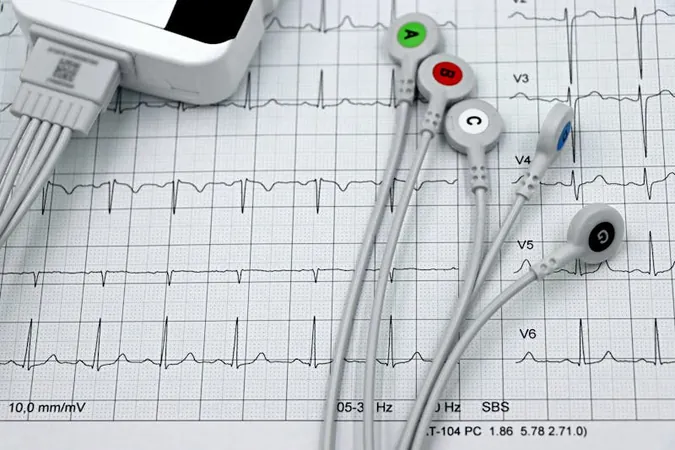
Breaking Ground: How Surface-Enhanced Raman Spectroscopy Could Transform Heart Attack Diagnosis!
2024-11-18
Author: Li
In a groundbreaking development, Surface-Enhanced Raman Spectroscopy (SERS) is set to revolutionize the way we diagnose heart attacks. This innovative technique, traditionally used for detecting trace contaminants in food and water, is extending its reach to clinical settings, promising enhanced speed and accuracy in identifying critical biological samples.
At the heart of SERS lies its unique ability to use light to pinpoint molecular structures. When a photon strikes a material, it can scatter in various ways, altering its direction, intensity, or frequency—a phenomenon known as light scattering. By employing a nanostructured metallic surface, SERS amplifies these scattered signals, making it possible to detect even the faintest biomarker signals that could indicate a heart attack.
Despite its promising potential backed by robust research, the actual performance of SERS in real-world clinical environments has faced several hurdles. Key challenges include optimizing the magnetic and electric fields that are crucial for signal amplification. Many existing designs fail to maximize the contribution of magnetic fields, resulting in suboptimal performance. Additionally, the variability of SERS signals has created uncertainty that hinders its integration into emergency medical situations—especially for something as time-sensitive as heart attack diagnosis.
Heart attacks, which affect hundreds of thousands of Americans yearly, are often preceded by distinct biological changes, leading to the release of specific enzymes and proteins in the blood. Myoglobin and troponin-I are two critical markers that alert healthcare professionals to the onset of a heart attack, prompting immediate intervention to restore oxygen supply to the heart muscle and minimize damage.
However, diagnosing a heart attack is notoriously complex. Symptoms can vary widely based on factors like gender and ethnicity—while men commonly present chest pain, women might display atypical signs such as jaw pain or severe palpitations. The variability of symptoms can sow confusion, often leading to delays in seeking treatment. Once in a hospital setting, the process for confirming a heart attack can drag on due to lengthy blood test analyses, taking up to several hours, despite the urgency.
Recently, a study led by researcher Peng Zheng has made remarkable progress in overcoming these challenges by enhancing SERS technology's effectiveness for biomarker detection. The innovative chip developed by Zheng's group optimizes both electric and magnetic fields, ensuring minimal signal fluctuations and deeper insights into molecular structures by focusing on frequency changes rather than mere intensity.
What sets this new SERS blood test apart is its efficiency—promising results in less than seven minutes rather than hours. Its accuracy and non-invasive nature could empower healthcare professionals to make faster decisions and might even enable ordinary individuals to assess their heart health in emergency situations.
This breakthrough “metasurface” chip signifies a potential paradigm shift in heart attack diagnostics, breaking down barriers that have historically delayed timely medical interventions. Furthermore, its versatility could lead to adaptations for detecting a range of other critical health indicators, including markers for infectious diseases, cancer diagnostics, and therapeutic monitoring.
As we push toward integrating such advanced technologies in our healthcare systems, the challenge remains: will this innovative approach to heart attack detection be readily available where and when patients need it most? Stay tuned—this is just the beginning of a healthcare revolution!


 Brasil (PT)
Brasil (PT)
 Canada (EN)
Canada (EN)
 Chile (ES)
Chile (ES)
 España (ES)
España (ES)
 France (FR)
France (FR)
 Hong Kong (EN)
Hong Kong (EN)
 Italia (IT)
Italia (IT)
 日本 (JA)
日本 (JA)
 Magyarország (HU)
Magyarország (HU)
 Norge (NO)
Norge (NO)
 Polska (PL)
Polska (PL)
 Schweiz (DE)
Schweiz (DE)
 Singapore (EN)
Singapore (EN)
 Sverige (SV)
Sverige (SV)
 Suomi (FI)
Suomi (FI)
 Türkiye (TR)
Türkiye (TR)